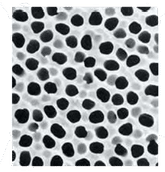USDA patents method to reduce ammonia emissions
Advertisement
Capturing and recycling ammonia from livestock waste is possible using a process developed by U.S. Department of Agriculture (USDA) researchers. This invention could help streamline on-farm nitrogen management by allowing farmers to reduce potentially harmful ammonia emissions and concentrate nitrogen in a liquid product to sell as fertilizer.
The work was conducted by Agricultural Research Service (ARS) scientists Matias Vanotti and Ariel Szogi at the agency's Coastal Plains Soil, Water and Plant Research Center in Florence, S.C. ARS is USDA's chief intramural scientific research agency, and this research supports the USDA priorities of responding to climate change and promoting international food security.
The system uses gas-permeable membranes that are similar to materials already used in waterproof outdoor gear and biomedical devices. Using these materials, the scientists recorded an average removal rate from 45 to 153 milligrams of ammonia per liter per day when manure ammonia concentrations ranged from 138 to 302 milligrams of ammonia per liter.
When manure acidity decreased, ammonia recovery increased. For instance, the scientists were able to recover around 1.2 percent of the total ammonia emissions per hour from manure at pH 8.3. But the recovery rate increased 10-fold to 13 percent per hour for manure at pH 10.0.
In a follow-up study, Vanotti and Szogi immersed the membrane module into liquid manure that had 1,290 milligrams of ammonia per liter. After nine days, the total ammonia concentration decreased about 50 percent to 663 milligrams per liter and acidity increased from pH 8.1 to 7.0. This meant that the gaseous or free ammonia in the liquid—the portion of the total ammonia linked to ammonia emissions--decreased 95 percent from 114.2 to 5.4 milligrams per liter.
The scientists used the same process in 10 consecutive batches of raw swine manure and ended up recovering concentrated nitrogen in a clear solution that contained 53,000 milligrams of ammonia per liter.
USDA filed for a patent on this invention in June of 2011.
Most read news
Other news from the department science
These products might interest you

Get the chemical industry in your inbox
By submitting this form you agree that LUMITOS AG will send you the newsletter(s) selected above by email. Your data will not be passed on to third parties. Your data will be stored and processed in accordance with our data protection regulations. LUMITOS may contact you by email for the purpose of advertising or market and opinion surveys. You can revoke your consent at any time without giving reasons to LUMITOS AG, Ernst-Augustin-Str. 2, 12489 Berlin, Germany or by e-mail at revoke@lumitos.com with effect for the future. In addition, each email contains a link to unsubscribe from the corresponding newsletter.



























































